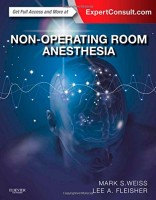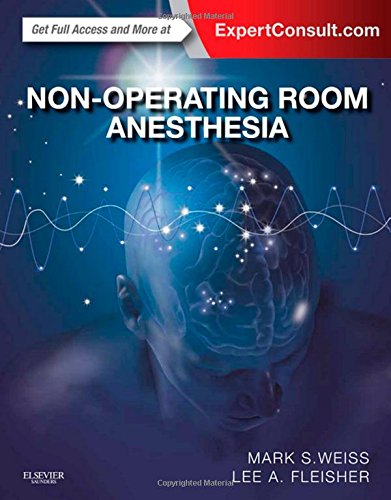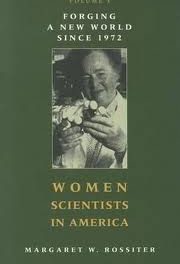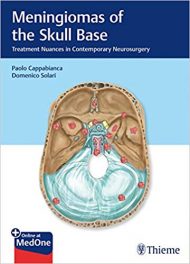 Authors: Mark S. Weiss, MD, and Lee A. Fleisher, MD
Authors: Mark S. Weiss, MD, and Lee A. Fleisher, MD
Publisher: Elsevier – Saunders – 256 pages
Book Review by: Nano Khilnani
The practice of non-operating room anesthesiology has spread widely in the last twenty to thirty years, Drs Weiss and Fleisher point out in this book. The three main reasons contributing to this development – which has improved patient safety – are: the growth in the number of number of drugs available, breakthroughs in medical technology, and innovations in anesthetic techniques.
At the outset we want to inform you that like most Elsevier Saunders products, the entire contents of this book are available to you online, and are accessible with your PC, Mac, most mobile devices, and eReaders. ExpertConsult allows you to browse, search, and interact with this – online and offline.
These are the innovative features available to you online:
- Seamless, real-time integration between devices
- Straightforward navigation and search
- Notes and highlights sharing with other users through social media
- Enhanced images with annotations, labels, and hot spots for zooming on specific details*
- Live streaming video and animations*
- Self-assessment tools such as questions embedded within the text and multiple-format quizzes. *Some features vary by title
Forty-five specialists in fields relating to anesthesiology and critical care from the United States and India, Norway, and Sweden, contributed material to this book on non-operating room anesthesiology (NORA). This pioneering, valuable book contains 24 chapters organized around five sections, namely:
- Preparation for Non-Operating Room Activities
- General Management Principles
- Practices and Principles
- Financial Considerations
- The Future of Non-Operating Room Anesthesia
Well-organized material in the chapters include an introduction to the chapter title; main topics and subtopics within them; boxes with enumerated steps, for example, and other information; photos with descriptive captions; and tables with detailed information. A Conclusion and References are provided at the end of each chapter.
Let’s take a look at chapter 1 entitled Engineering Excellence in Non-Operating Room Anesthesia Care.
In the introduction to this chapter, the authors Drs. Meghan Lane-Fall and Mark S. Weiss discuss how advances in medical technology in the past three decades have enabled anesthesiologists to better prepare patients for surgeries with noninvasive or minimally invasive procedures. Some of these surgeries are: laparotomy, major vascular surgery, sternotomy, and thoracotomy.
They write that not only have patients been treated more comfortably by nonsurgical intervention in specialized areas outside of the operating room, they have also been treated more effectively and with lower cost. They point out that 30 percent of all procedures in the Department of Anesthesiology and Critical Care at the University of Pennsylvania have been performed in non-operating room locations, following a nationwide trend.
Five main topics are discussed in this chapter, namely:
- Achieving Excellence in Health Care
- Proactive Versus Reactive Approaches to Problems
- Proactive Approaches: Anticipating Problems
- Reactive Approaches: What Happens When Something Goes Wrong
- Moving from Good to Great
Under the five main topics, 11 subtopics and discussions therein are provided in this chapter.
Just one table is provided in this chapter, namely Table 1-1 entitled Non-Operating Room Anesthesia Safety Checklist with questions under three headings: Before Induction of Anesthesia; Before Procedure Start; and Before Patient Leaves Procedure Room. A couple of examples of the questions in the checklist: Is the anesthesia machine and medication check complete? and Has antibiotic prophylaxis been given within the last 60 minutes?
Also, just one box is provided for this chapter: Box 1-1 entitled Sample Protocol for Cardioversion with Non-Operating Room Anesthesia, which lists 22 steps to be followed.
The Conclusion of chapter 1 is “Excellence and quality in NORA care is not achieved accidentally but rather as a result of deliberate engineering of care processes.” The References section at the end of the book contains 15 books. An example: Diversification and specialization in anesthesia outside the operating room, an article by Souter KJ and Davies JM in the journal Current Opinion in Anesthesiology.
This is an excellent work in this relatively new and growing specialization within anesthesiology. In my opinion, this is an essential book to have for any medical student or resident preparing for a practice in anesthesiology, as well as any practicing physician interested to learn more about non-operating room anesthesia.
Authors:
Mark S. Weiss, MD is an Assistant Professor of Anesthesiology and Critical Care at the University of Pennsylvania’s Perelman School of Medicine. He received his medical degree from University of Cincinnati and completed his residency training at Yale University. His focus is on perioperative management of high-risk patients, with an emphasis on non-operating room anesthesia (NORA). He is currently the director of Inpatient Endoscopy Services at the University of Pennsylvania.
Lee A. Fleisher, MD is the Robert D. Dripps Professor and Chair of the Anesthesiology and Critical Care and a Professor of Medicine at the University of Pennsylvania’s Perelman School of Medicine. He received his medical degree from the State University of New York at Stony Brook, from which he received the Distinguished Alumni Award in 2011. His research focuses on perioperative cardiovascular risk assessment and reduction and the measurement of quality of care.
He has received numerous, federal, industry, and foundation grants related to these subjects. He is President of the Association of University Anesthesiologists. He is a member of the Consensus Standards Advisory Committee of the National Quality Forum and of the Administrative Board of the Council of Faculty and Academic Specialties of the Association of American Medical Colleges. In 2007, he was elected to membership of the Institute of Medicine of the National Academy of Sciences.
Contributors:
Rose Campiest-Luther, MD, FAAP
Thomas Cutter, MD, MaEd
Christine D. Diaz, MD
Karen B. Domino, MD, MPH
Richard E. Galgon, MD, MS
Esther D. Garazi, MD
Gregory G. Ginberg
Basavana G. Goudra, MD, FRCA, FCARSI
Caitlin G. Guo, MD, MBA
Anil Gupta, MD, FRCA, PhD
Manon Hache, MD
Eric A. Harris, MD, MBA
Jennifer E. Hofer, MD
E. Heidi Jerome, MD
Max Kanevsky, MD, PhD
Meghan Lane-Fall, MD, MSHP
Kelly Lebak, MD
Jeffrey Lee, MS, MD
Mark A. Leibel, MD
Larry Lindenbaum, MD
Alex Macario, MD, MBA
Jeff E. Mandel, MD, MS
Ramon Martin, MD, PhD
Julia I. Metzner, MD
Roger A. Moore, MD
Melissa L. Pant, MD
Mark C. Phillips, MD
Christopher D. Press, MD
Johan Raeder, MD, PhD
W. Kirke Rogers, MD
Daniel Rubin, MD
John P. Scott, MD
Jack S. Shanewise, MD
Preet Mohinder Singh, MD
Scott Springman, MD
Lena S. Sun, MD
BobbieJean Sweitzer, MD
Pedro P. Tanaka, MD, PhD
Jonathan W. Tanner, MD, PhD
John M. Trummel, MD, MPH
Sophia van Hoff, MD
Lindsay L. Warner, BS
Mary Ellen Warner, MD
Nafisseh S. Warner, MD
Mark S. Weiss, MD







